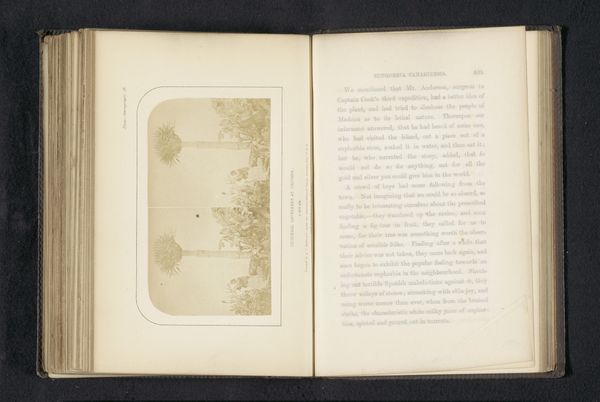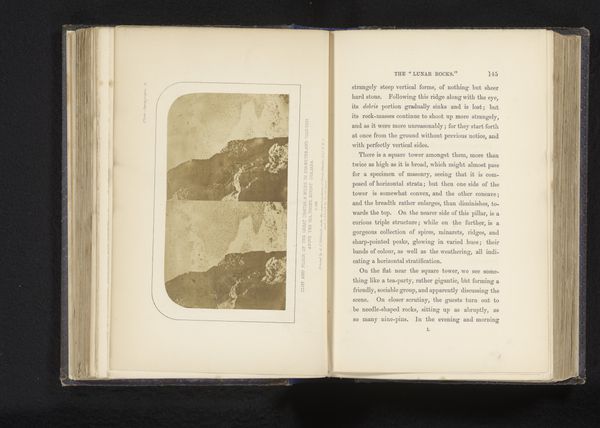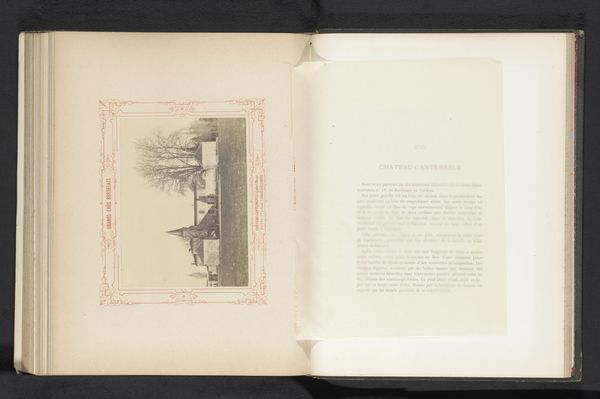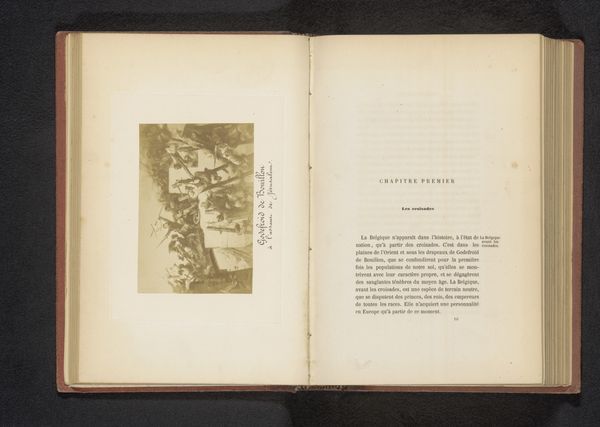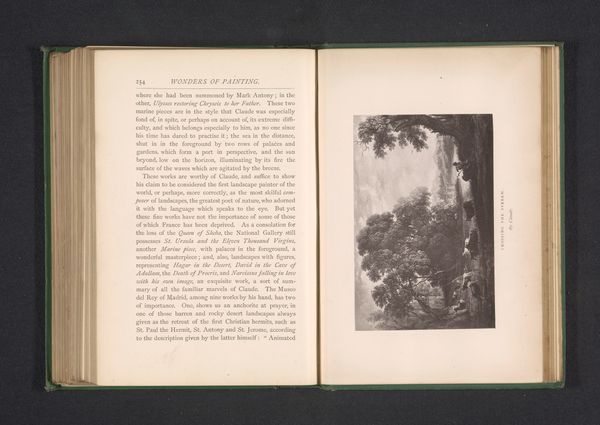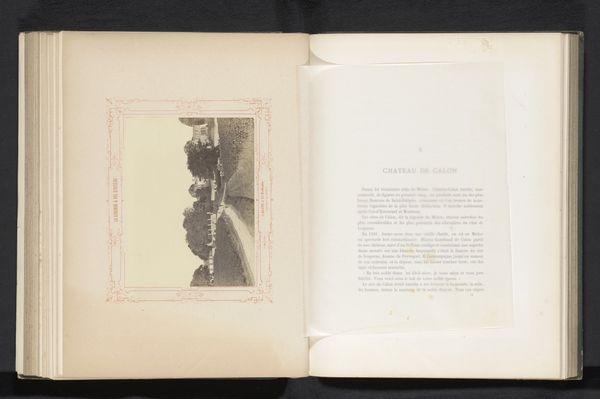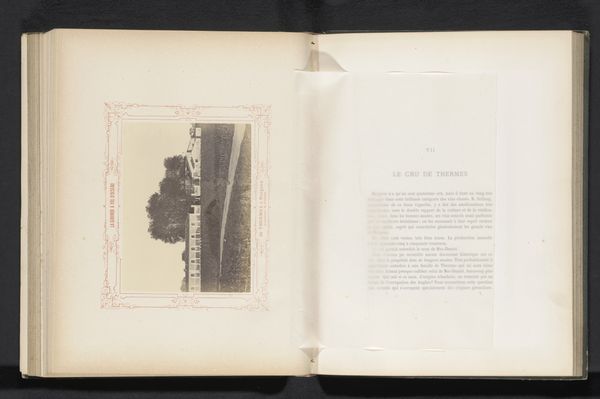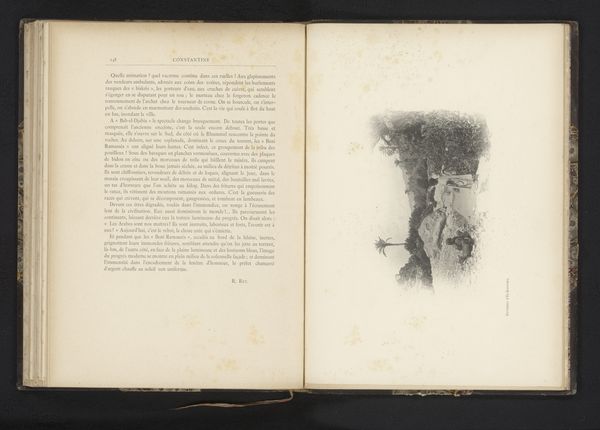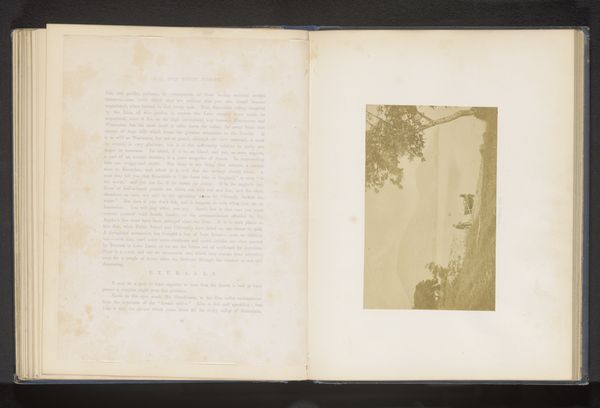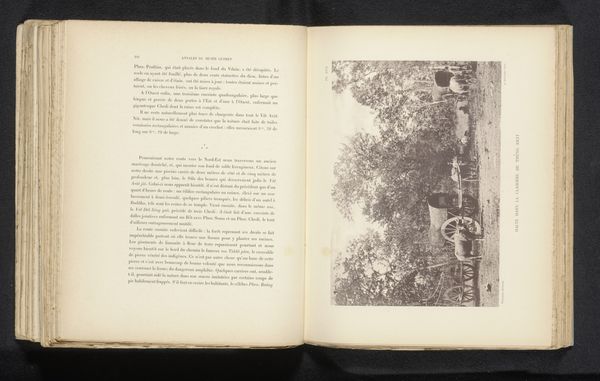
print, photography, gelatin-silver-print
#
aged paper
#
homemade paper
#
paper non-digital material
#
paperlike
# print
#
landscape
#
personal journal design
#
photography
#
plant
#
gelatin-silver-print
#
thick font
#
letter paper
#
paper medium
#
historical font
#
small font
Dimensions: height 67 mm, width 119 mm
Copyright: Rijks Museum: Open Domain
Curator: This gelatin-silver print is titled "Verzamelaars van cochenilleluizen te La Orotava," created sometime between 1856 and 1858 by Charles Piazzi Smyth. Editor: My first impression is one of faded elegance, like peering through a sepia-toned dream. The soft contrasts and subdued light create a tranquil, almost ethereal landscape. Curator: Indeed, the composition uses a rather simple foreground, middle ground, and background. The eye is drawn upward by the vertical thrust of the plants, anchoring the otherwise open space. The delicate gradation of tones within the grayscale provides an evocative depth. Editor: Yet this isn't simply a picturesque scene. Smyth documents a specific historical context: the cochineal harvest. These plants sustain the scale insects from which a vibrant red dye was extracted, an important trade commodity from the Canary Islands in this period. Who owned this trade, who labored for it? The muted tones almost belie a deeper history of colonialism and labor exploitation inherent in its production and distribution. Curator: A photograph of this sort of precision in rendering the form of each leaf, the careful positioning of figures amidst the landscape—these are formal decisions intended to portray an objective truth, meticulously presented. Editor: But truth is always mediated, especially when considering a photograph produced within the context of Victorian-era scientific exploration. It seems necessary to question the power dynamics present in whose narrative is visually centered and archived. Curator: A fair point, although I lean more on interpreting the photograph’s construction in its tonal range and textural variance. These elements allow the image to resonate across different epochs, despite alterations in our viewing patterns. Editor: Absolutely. Despite potential constraints in its perspective and scope, thinking critically about this photographic rendering can hopefully broaden understandings about these visual-historical connections and prompt useful discussions on exploitation and power relations across diverse temporal landscapes.
Comments
No comments
Be the first to comment and join the conversation on the ultimate creative platform.
